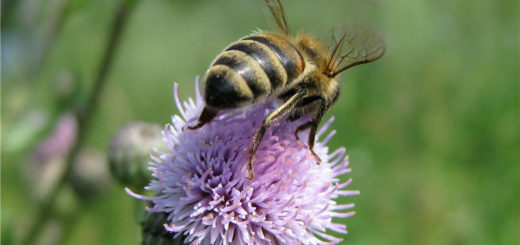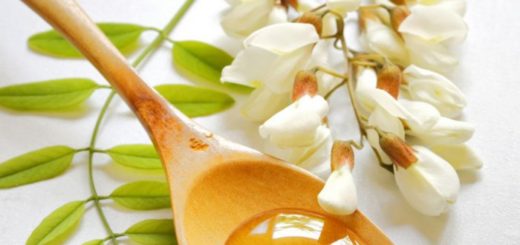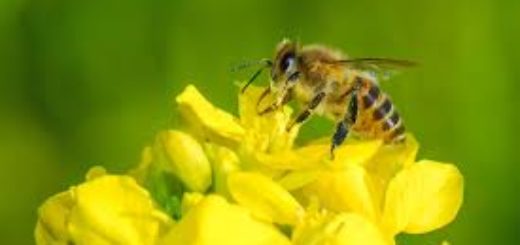buckwheat honey plant
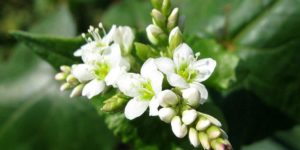 Buckwheat honey plant as: flowering, productivity.
Buckwheat honey plant as: flowering, productivity.
Buckwheat – This herbaceous annual plant. At the height grows to 60 cm.
Durable, branched stalk until the end of the growing season coarsens.
The leaves are sharp, extensive. The flowers are small pink or white, bisexual, with a simple perianth as corolla. The inflorescence is shaped like a small brush.
For growing buckwheat in view of beekeeping should have in place a significant piece of land, since its yield is up 10 quintals 1 it.
In buckwheat modest gardens planted for green manure (organic fertilizer).
Planting and growing buckwheat
Buckwheat sown in 2-3 stages with a gap 10-15 days. This makes it possible to extend medosbor.
Buckwheat sowing sown, when the soil warms up 12-15 C.
Medoproduktivnost due buckwheat varieties, farming and other conditions.
Field of visitors increases bees, if buckwheat is sown in arable land, and wide rows were planted before winter and legumes.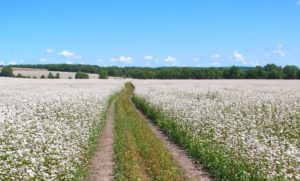
Buckwheat does not tolerate acidic soil, heavy clay or excessively humidified, and marshes.
Tillage involves early and deep plowing, conducted soil spring cultivation, latest cultivation and make for harrowing 1-2 the day prior to planting, a depth 5-6 cm.
known, that the application of fertilizers buckwheat nectar secreted more and more actively visited by bees to these crops.
noted, it is better tying Buckwheat made in the case, When the bee visits each flower two to three times.
Remember, that of the fertilizer must not contain chlorine.
For optimum fertilizer use nitrophosphate, nitroamophoska or granular superphosphate. Also fed crops of buckwheat phosphorus-potassium fertilizers.
Number of seeds for planting depends on the type of soil, method of planting and climatic conditions.
seeding rate
So in areas with constant temperatures low seeding rate increases – to 90 kg seed in 1 it, in warm regions – to 70 kg 1 ha at planting not wide rows, If seeding method shirokorjadnyj, the amount of seed is reduced to 60-65 kg 1 it .
To increase productivity must successfully pick seeds. Among many other varieties of produce such Buckwheat: Hercules, Bolshevik, Kalinin, Shatilovskaya 4.
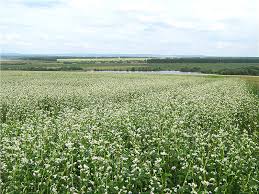 In the gardens grow efficiently are zoned determinant varieties, as grains, Ivanna, Sumchanka.
In the gardens grow efficiently are zoned determinant varieties, as grains, Ivanna, Sumchanka.
Before sowing the seeds are processed micronutrients, containing boric acid and ammonium molybdenum or wood ash.
If the soil for planting buckwheat poor and not Zaros weeds, the distance between beds is 8-15 cm.
If the soil is fertile and clogged with weeds, it is the ideal distance between rows should be to 45 cm (The best varieties for this Ukrainian, Elena, Slobozhanka, Antario ).
This makes it possible to efficiently process the beds and make feeding.
Ripening varieties of buckwheat (Karakityanka, Chat Tau, dagger, Cheremshanka, Saulik) better to sow a heap and narrow rows.
The depth of planting corn on heavy soils reaches 4 cm, and a more lightweight – close 8 cm, then rolled soil.
Before the first shoots should loosen the soil, to facilitate the progress of tender shoots of buckwheat.
By early flowering need to organize regular grain moistening the soil. Row spacing should handle at least three times.
The last time should shoots well pidhornuty the total destruction of weeds.
Sometimes buckwheat to protect it from pests are treated inteksetsidami. But if insects do not reproduce massively, it is best to avoid this procedure, since a few days before flowering fields placed beehives.
Standards bdzholosim'yi per hectare / medoproduktivnost
Each hectare of buckwheat fields deliver 3-4 bees.
If the site less in length 0,5 km, hives is set on one side of the field, If the length field is 0,5 km, then the hives are placed in the center, if about 0,7 km, then make a counter-pollination, to ensure uniform bees visiting flowers of buckwheat.
If bees were brought to the first rozpustyvshsya flowers late, then lost from 4 to 6 kg of honey per family.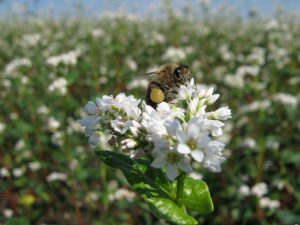
Medoproduktivnost as buckwheat honey plant 60-100 kg honey 1 it.
The largest bee attendance buckwheat activity during its flowering – am.
Optimal conditions for fruit formation nektarovydilennya and find the average temperature 19-20 ° C with adequate soil moisture.
The best yields in grasslands and nektaroproduktyvnosti are the following:
10-20 June – This will ensure colonies took bribes from mid-July to mid-August;
20-25 June – This gathering nectar create a solid forage for bees, contribute to the development of bee colonies, although the figures may be lower, than in previous crops.
This will provide mowing bees tricks on continuation of August.
Working bees to benefit those swath, many of the cultural honey plants and wild honey plants from this period have shed, buckwheat flowers are the only source of nectar.
The flowering period lasts for buckwheat 30-40 days.
On an industrial scale using Mow buckwheat farming. On private land harvest harvested using scythes or sickles, tying in bundles.
Buckwheat honey
Buckwheat honey is a complex biological product, in whose chemical composition includes more than 400 components.
Their number is constantly changing not only the variety, but on climatic conditions, types of pollen, degree of maturity.
But, averages indicate high content of buckwheat honey amino acids and sugars.
It also includes enzymes:
- diastase (This digestive enzyme, which is produced in the pancreas and salivary glands)
- amylase (enzyme, that breaks down starch into oligosaccharides)
- phospholipase (enzyme, which breaks down fat meal)
It includes organic and inorganic acids and almost forty micro and macro, including the percentage prevail:
- iodine (beneficial effects on thyroid, relieves stress and irritability)
- zinc (beneficial effect on the appearance and condition of the skin, head of hair)
- iron (catalyst cellular respiration, regulation of redox processes)
- phosphorus (reduces the risk of osteoporosis, strengthens bones)
- calcium (needed for hair growth and bone, plays a leading role in the process of building tissue and muscle contraction)
It is advisable to note and high vitamin content: a large percentage of B vitamins, Ascorbic acid or vitamin C, vitamin E, RR.

